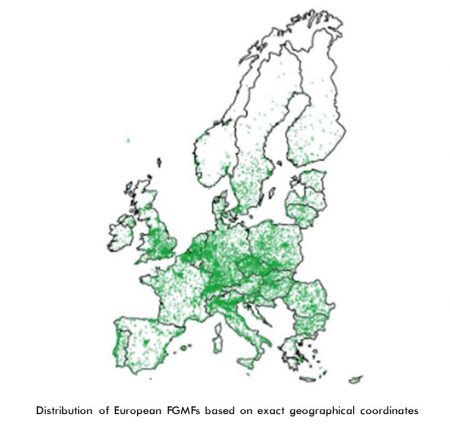High-growth firms received considerable attention by academic scholars and policy-makers, because of their crucial role in creating new jobs and sustaining economic growth. At the same time, the academic literature has pointed out how the determinants of high growth are difficult to predict, and that high growth tends not to persist over time.
Quite surprisingly, one category of firms has received less scholarly attention when dealing with firm growth: medium-size firms. Cheetah dataset offers the unique opportunity to address this research gap, providing original data about a large sample of European fast-growing mid-size firms (FGMFs).
“Cheetah is a data infrastructure within RISIS project that contains information of three cohorts of medium size firms that experienced sales or employment fast growth in the periods 2008-2011, 2009-2012 and 2010-2013. Its main innovative aspect is that we cover activity of medium size firms. There are a lot of researches and policy attention on innovation activity of small entrepreneurial fast–growing firms or large ones. Medium-size firms are important for job creation, but we really know little about them. So, Cheetah is a first attempt to cover this activity and we are convinced that looking at this data could be relevant to obtain new insights on how to stimulate job creation in Europe”, said Massimiliano Guerini, representative of Politecnico di Milano (Polimi) in RISIS project and Cheetah access manager.
These FGMFs covered by Cheetah are located in 30 European countries (EU-28, Norway and Switzerland) plus Israel, for an overall number of 42,369 firms.
Medium-sized firms have been classified according to definitions of EUROSTAT and Entreprise de taille intermédiaire (ETI), that define them as firms with a number of employees between 50 and 249, and either a turnover of not exceeding €50 million or a balance sheet total of not exceeding €43 million.
After identifying medium sized firms, Polimi researchers selected those firms that experienced fast growth rates applying the OECD definition of high-grow firm. According to this definition, all firms with average annualized growth of greater than 20% over a three-year period, should be considered as high-growth firms.
Moreover, firms have been geocoded using Google API. At the geographical level, Cheetah is harmonized with the other research infrastructures in RISIS by adopting the NUTS classification of administrative units (as provided by Eurostat) and the FUA classification for urban areas (as provided by the OECD).

“In RISIS project, we are now working to extend the temporal coverage to include more cohorts of medium size fast growing firms in more recent period, but also to better understand how these medium size firms obtained this important grow rate. For instance, we are collecting additional information on their innovation patterns to understand if they have introduced new business models and to study the relation between innovation and growth”, said Guerini.
Cheetah will be integrated with the other firm-level RISIS databases through the FirmReg facility, which aims at uniquely identifying and tracking over time the business entities included in firms’ datasets that are part of RISIS, such as CIB on the largest innovative industrial firms worldwide and VICO on venture capital backed start-ups.
Full documentation of Cheetah dataset is now online on RISIS – Zenodo community space.






